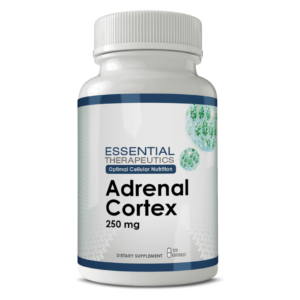Fibromyalgia Past And Present
–> Register For FREE HERE to get your login password and free webinar resources (please note you’ll need a password to be able to access this FREE event)
Fibromyalgia Syndrome
The word fibromyalgia (pronounced FIY-bro-my-AL-juh) is derived from the Greek algia, meaning “pain,” and myo, indicating “muscle,” and the Latin word fibro, referring to the connective tissues of ligaments and tendons. So basically, fibromyalgia means, “pain in the muscles, ligaments, and tendons.” Over ten million Americans suffer with fibromyalgia – ninety percent of them women between twenty-five and forty-five years old.
Fibromyalgia is a syndrome, or a group or signs and symptoms that occur together and characterize a particular illness. Some of the most common symptoms associated with fibromyalgia syndrome (FMS) include diffuse muscle pain, poor sleep, and often, unrelenting fatigue.

The diagnosis is usually reached after ruling out other conditions including neurological, autoimmune, endocrine, musculoskeletal, immunological, and mental disorders. Patients have typically had the illness at least 7 years and have been seen by a dozen different doctors before they’re diagnosed with fibromyalgia.
Criteria for Diagnosing Fibromyalgia
| 1. Pain and symptoms over the past week, based on the total number of painful areas (out of 19 parts) of the body, plus level of severity of these symptoms: a. Fatigue b. Waking un refreshed c. Cognitive (memory or thought) problemsPlus the number of other general physical symptoms |
| 2. Symptoms lasting at least three months at a similar level |
| 3. No other health problem that would explain the pain and other symptoms |
There is currently no agreed upon diagnostic test to confirm the presence of fibromyalgia.*
Diagnosis is usually made by process of elimination.
New Test Shows Promise
In 2013, EpicGenetics launched the first “fibromyalgia blood test.” The test is based on results of a clinical scientific study conducted by a research team at the University of Illinois College of Medicine at Chicago led by Professor Frederick Behm, head of the Department of Pathology.
The FM/a test looks for chemokines and cytokines, which are protein molecules produced by white blood cells. They were able to identify 89% of the healthy controls and 93% of the fibromyalgia patients successfully.
Critics say the FM/a test is unreliable and the same molecule levels can be found in people with other disorders, such as rheumatoid arthritis.
To order the FM/a test, patients must obtain a doctor’s authorization through a Doctors Authorization Form, as well as insurance plan information on the Patient Information Form. Both forms can be downloaded from the EpicGenetics FM/a website (FMTEST.com).
History of Fibromyalgia
European literature contains descriptions of musculoskeletal pain dating back to the 16th century.
In the late 1800s UK physician, Beard, a neurologist referred to a condition that included widespread pain, fatigue and psychological disturbances. He called this condition neurasthenia/myelasthenia. These symptoms were attributed to the daily stresses.

Sir William Richard Gowers
Sir William Gowers was the first to introduce the term “fibrositis”, which was used for the next 72 years. Noted symptoms he included in his diagnoses were spontaneous pain and asymptomatic sensitivity to mechanical compression, fatigue, sleep disturbances, and aggravation of symptoms by exposure to acute and chronic cold and muscular overstrain. For treatment, he suggested manipulation, counterirritation, and cocaine injections and noted the failure of salicylates.
In 1909, Sir William Osler, at the time the best-known physician in the English-speaking world, put forward that muscular rheumatism involved “neuralgia of the sensory nerves of the muscles.” Ambiguity of physical manifestations, inconsistency of histological changes and a lack of specific diagnostic tests hindered a wide recognition of fibrositis by North American physicians.
During World War II there was an unusual increased occurrence of fibrositis (muscle pain) among soldiers. In the absence of inflammation and combined with depression and stress Boland and Corr (1943) labeled the condition as psychogenic rheumatism.
In 1972 Hugh Smyth, a Canadian physician described a condition of widespread pain and tender points. This was the first time FMS was designated exclusively as a generalized pain syndrome incorporating fatigue, lack of sleep, morning stiffness, emotional distress, multiple tender points and factors that either relieved or aggravated the condition.
Smythe provided a working set of diagnostic criteria based on his anecdotal observations. He specified sites of tender points many of which were still used in the 1990 American College of Rheumatology (ACR) criteria. Shortly thereafter in 1975, a colleague of Smythe, Moldofsky, carried out the first sleep electroencephalogram study, this properly demonstrating the role of sleep in FMS.
In 1976 Dr P.K. Hench was the first to use the modern term “fibromyalgia” to refer to these symptoms.
Rheumatologist Mohammed Yunus first used the term in a scientific publication in 1981. This study confirmed that the symptoms characteristic of FMS were significantly more common as well as more severe in FMS patients. Additional symptoms, including swelling of tissues, paresthesia, headaches and irritable bowel syndrome were also shown to be considerably increased in FMS patients. These findings saw fibromyalgia being defined as a syndrome. Numerous other studies have confirmed these findings.
In 1990 The American College of Rheumatology (ACR) first proposed the current criteria for defining fibromyalgia syndrome. The criteria include a history of widespread pain lasting more than 3 months and the presence of at least 11, out of a possible 18, tender points. Pain is considered to be widespread when it affects all four quadrants of the body; that is, you must have pain in both your right and left sides as well as above and below the waist to be diagnosed with fibromyalgia.
What Causes Fibromyalgia?
 Research suggests fibromyalgia may be the result of:
Research suggests fibromyalgia may be the result of:
- Trauma, especially whiplash injuries.
- Hypothalamus-pituitary-adrenal axis (HPA) dysfunction.
- Emotional/physical/mental stress.
- Low thyroid function
- Low serotonin states.
- Adrenal dysfunction.
- Chronic viral, mycoplasma, and or bacterial infections.
- Endocrine disorders.
- Sleep disorders.
The truth is we really don’t know for sure what causes fibromyalgia.
What We DO Know:
Fibromyalgia is now thought to arise from a miscommunication between the nerve impulses of the central nervous system. The neurons, which supply the brain, become more excitable, exaggerating the pain sensation. This over-amplication of pain is referred to as “central sensitization” or central pain amplification.
Central Pain Amplification or sensitization/hyperalgesia. This occurs when the nerve cells that supply the brain become more excitable, over amplifying sensations of pain. When you have FMS, a bumped knee, a stubbed toe, or even a playful poke from a friend can take your breath away and be felt hours later.

In fact, they perceive pain that would normally not be felt by healthy individuals. This can be caused by low levels of certain neurotransmitters (brain chemicals), including serotonin, norepinephrine, and dopamine and elevated substance P levels.
Pain can be triggered and magnified by osteoarthritis (wear-and-tear joint damage), osteoporosis (bone loss), and scar tissue from past surgeries, nerve damage, low thyroid, as well as other pain generating conditions.
Traditional Drug Therapy for Fibromyalgia
In June 2007, Lyrica (pregabalin) became the first FDA-approved drug for specifically treating fibromyalgia; a year later, in June 2008, Cymbalta (duloxetine hydrochloride) became the second; and in January 2009, Savella (milnacipran HCI) became the third.
 Lyrica, Cymbalta and Savella reduce pain and improve function in some people with fibromyalgia. While those with fibromyalgia have been shown to experience pain differently from other people, the mechanism by which these drugs produce their effects is unknown. There is data suggesting that these drugs affect the release of neurotransmitters in the brain including serotonin and norepinephrine. Neurotransmitters are chemicals that transmit signals from one neuron to another.
Lyrica, Cymbalta and Savella reduce pain and improve function in some people with fibromyalgia. While those with fibromyalgia have been shown to experience pain differently from other people, the mechanism by which these drugs produce their effects is unknown. There is data suggesting that these drugs affect the release of neurotransmitters in the brain including serotonin and norepinephrine. Neurotransmitters are chemicals that transmit signals from one neuron to another.
Lyrica, marketed by Pfizer Inc., was previously approved to treat seizures, as well as pain from damaged nerves that can happen in people with diabetes (diabetic peripheral neuropathy) and in those who develop pain following the rash of shingles.
Side effects of Lyrica including sleepiness, dizziness, blurry vision, weight gain, trouble concentrating, swelling of the hands and feet, and dry mouth. Allergic reactions, although rare, can occur.
Cymbalta’s side effects include nausea, dry mouth, sleepiness, constipation, decreased appetite, and increased sweating. Like some other antidepressants, Cymbalta may increase the risk of suicidal thinking and behavior in people who take the drug for depression.
Savella, marketed by Forest Pharmaceuticals, Inc., is the first drug introduced primarily for treating fibromyalgia. Savella is not used to treat depression in the United States, but acts like an antidepressant similar to Cymbalta.
Side effects include nausea, constipation, dizziness, insomnia, excessive sweating, vomiting, palpitations or increased heart rate, dry mouth and high blood pressure.
There is a time and place for prescription drugs. However, using drugs to treat all the symptoms of fibromyalgia leads to more symptoms and more drugs.
Correcting the underlying causes of fibromyalgia is the key for long term success.
Raising the pain threshold is key for DRAMATICALLY improving and or overcoming fibro pain.
Individuals with fibromyalgia syndrome have low levels of serotonin, a 4-fold increase in nerve growth factor, and elevated levels of substance P.

Substance P, the neuropeptide in spinal fluid, is a neurotransmitter that is released when axons are stimulated. Increased levels of substance P increase the sensitivity of nerves to pain or heighten awareness of pain.
Pain signals become magnified and pain is more pronounced.
Although it’s not fully understood, fibromyalgia patients have an imbalance of the hypothalamus-pituitary-adrenal (HPA) axis. This imbalance creates hormonal inconsistencies, which disrupt the body’s ability to maintain homeostasis.
Many of the most common fibromyalgia symptoms including widespread muscle pain, fatigue, poor sleep, gastrointestinal problems, and depression regularly occur in people with various neuroendocrine disorders, including those manifested by HPA dysfunction.
Researchers believe suppression of the HPA (quite likely from chronic stress), which results in lowering human growth hormone (HGH), dehydroepiandrosterone (DHEA), cortisol, and other hormones, is aggravated by the chronic pain and poor sleep associated with fibromyalgia.
Poor sleep and chronic stress are associated with low levels HGH, cortisol, DHEA, serotonin, norepinephrine, dopamine, and other essential nutrients needed for optimal health.
Hypothalamus-Pituitary-Adrenal Axis (HPA) Dysfunction
The main function of the hypothalamus is homeostasis, or maintaining the body’s status quo.
The hypothalamus receives and transmits messages from the nervous system and hormonally through the circulatory system. Because of its broad sphere of influence, the hypothalamus could be considered the body’s master computer. The hypothalamus receives continuous input about the state of the body, and must be able to initiate compensatory changes if anything drifts out of line.
The Hypothalamus regulates such bodily functions as:
- Blood pressure- is often low in those with fibromyalgia.
- Digestion- bloating, gas, indigestion, and reflux are common in FMS patients.
- Circadian rhythms (sleep/wake cycle)- which is consistently disrupted in FMS.
- Sex drive- loss of libido is a common complaint for FMS patients.
- Body temperature- is often low in FMS patients.
- Balance and coordination- FMS patients have balance and coordination problems.
- Heart rate- mitral valve prolapse (MVP) and heart arrhythmias are a common finding in FMS patients.
- Sweating- it’s not unusual for FMS patients to experience excessive sweating.
- Adrenal hormones- are consistently low in FMS patients.
- Thyroid hormones and metabolism-hypothyroid is a common finding in FMS patients.

A Vicious Cycle
- Chronic stress disrupts HPA homeostasis, leading to allodynia.
- Chronic pain disrupts the circadian rhythm.
- Dysfunction in the circadian rhythm results in poor sleep.
- Poor sleep reduces growth hormone production, leading to poor repair of damaged muscle fibers, poor memory, fatigue, suppressed immune function, and more pain.
- Increased pain further disrupts sleep and leads to depletion of stress coping chemicals including serotonin.
- A reduction in serotonin causes an increase in the neurotransmitter, substance P. Substance P enhances pain receptors, creating even more pain.
- Poor sleep and ongoing stress lead to fatigue, mood disorders, IBS and may cause thyroid dysfunction.
- Chronic stress contributes to adrenal fatigue, decreased DHEA, and lowered resistance to stress. Decreased stress coping abilities then lead to lowered immune function.
- Lowered blood volume from adrenal dysfunction (and resultant hypotension) leads to further fatigue.
Stress and Fibromyalgia
 A survey by The Fibromyalgia Network reports that 62% of their respondents list physical or emotional stress as the initiating factor in their acquiring fibromyalgia.
A survey by The Fibromyalgia Network reports that 62% of their respondents list physical or emotional stress as the initiating factor in their acquiring fibromyalgia.
I believe chronic stress is the underlying catalyst for the onset of HPA dysfunction and fibromyalgia. Several studies have demonstrated how chronic stress undermines the normal hypothalamic-pituitary-adrenal axis (HPA) function.
The Importance of a Good Night’s Sleep
Studies have shown that individuals who were prevented from going into deep sleep for a period of a week develop the same symptoms associated with FMS and CFS; diffuse pain, fatigue, depression, anxiety, irritability, stomach disturbances, and headaches.
Sleep deprivation markedly increases inflammatory cytokines (pain causing chemicals)—by a whopping 40%.
Therefore restoring deep restorative sleep is one of, if not the, most important steps in beating fibromyalgia.
Serotonin
Serotonin helps regulate sleep, digestion, pain, mood, and mental clarity.
Serotonin helps:
- Raise the pain threshold (have less pain), by blocking substance P.
- You fall asleep and stay asleep through the night.
- Regulate moods. “The happy hormone” reduces anxiety and reduces depression.
- Reduce sugar cravings and over-eating.
- Increase a person’s mental abilities.
- Regulate normal gut motility (transportation of food-stuff) and reverse irritable bowel syndrome (IBS).

Surveys have shown that as many as 73% of FMS patients have irritable bowel syndrome.
You have more serotonin receptors in your intestinal tract than you do in your brain.
Emotionally stressful situations cause the body to release adrenaline, cortisol and insulin. These stress hormones stimulate the brain to secrete serotonin. Long term stress and poor dietary habits can deplete the body’s serotonin stores.
Tryptophan, 5 Hydroxytryptophan (5HTP) and Serotonin
Tryptophan is one of eight essential amino acids. Tryptophan is absorbed from the gut into the bloodstream and then dispersed throughout the body. Ninety percent of tryptophan is used for protein synthesis, one percent is converted to serotonin, and the balance is used to make niacin. In the formation of serotonin, tryptophan is hydroxylated to 5-hydroxy-tryptophan (5-HTP) by tryptophan hydroxylase.
5-HTP is converted to serotonin by the decarboxylase enzyme, which is vitamin B6 dependent. Tryptophan is transported across the blood-brain barrier via a transport molecule, which also carries leucine, isoleucine, and valine, and prefers leucine.
However, 5-HTP easily crosses the blood-brain barrier and does not utilize this transport mechanism; thus, it does not compete for passage through the blood-brain barrier with these amino acids.
And unlike tryptophan, which is made from bacterial fermentation (and hence subject to contamination), 5HTP is derived from the West African plant Grifonia simplicifolia.
In the body, 5-HTP is converted directly in to serotonin. It is not broken down by tryptophan pyrrolase, and does not have to compete for transport across the blood-brain barrier.
Individuals with fibromyalgia have low levels of tryptophan, serotonin, and 5-HTP. Studies show that fibromyalgia patients have higher levels of metabolites in the kynurenine pathway, which diverts tryptophan away from serotonin production.
Selective Serotonin Reuptake Inhibitor (SSRI) Medications
 Prescription antidepressants like Savella and Cymbalta can be helpful. However, antidepressant drugs have potential side effects including anxiety, depression, fatigue, decreased sex drive, and disruption of normal circadian rhythms.
Prescription antidepressants like Savella and Cymbalta can be helpful. However, antidepressant drugs have potential side effects including anxiety, depression, fatigue, decreased sex drive, and disruption of normal circadian rhythms.
SSRI’s are supposed to help a patient hang onto and use their naturally occurring stores of the brain chemical serotonin. It’s like using a gasoline additive to help increase the efficiency of your cars fuel.
Most of the patients I see with fibromyalgia are running on fumes and a gasoline additive won’t help.
Please keep in mind that several studies show that between 19-70% of those taking antidepressant medications do just as well by taking a placebo or sugar pill.
I recommend my patients boost their serotonin levels by taking 5HTP.
5HTP and Depression
Studies (including double-blind) comparing SSRI and tricyclic antidepressants to 5HTP have consistently shown that 5HTP is as good if not better than prescription medications in treating mood disorders. Furthermore, 5HTP doesn’t have some of the more troubling side effects associated with prescription medications. 44, 45
5HTP and Sleep
5HTP has been shown to be beneficial in treating insomnia, especially in improving sleep quality by increasing REM sleep and increases the body’s production of melatonin by 200%. 46,47
5HTP and Fibromyalgia
Double-blind placebo-controlled trials have shown that patients with FMS were able to see the following benefits from taking 5HTP:
- decreased pain.
- improved sleep.
- less tender points.
- less morning stiffness.
- less anxiety.
- improved moods in general, including in those with clinical depression. 49
- increased energy.
Irritable Bowel Syndrome, 5HTP and Serotonin
There are more serotonin receptors in the intestinal tract than there are in the brain. This is one reason people get butterflies in their stomach when they get nervous.
The brain and gut are connected through the neuroreceptors 5-hydroxytriptamine-3 (5-HT3) and 5-hydroxytriptamine-4 (5-HT4). These serotonin receptors regulate the perception of visceral pain and the gastrointestinal (GI) motility. Serotonin controls how fast or how slow food moves through the intestinal tract.
It’s common for the symptoms associated with IBS, diarrhea and constipation, to disappear within 1–2 weeks once serotonin levels are normalized with 5HTP, digestive enzymes, and vitamin/mineral replacement therapy.
It is estimated that over 70% of patients with fibromyalgia, also suffer with IBS. This isn’t a surprise as stress is a common denominator for both conditions.
IBS can be dramatically improved by taking a good digestive enzymes, boosting serotonin with an optimal daily allowance multivitamin (Fibro Formula) and 5HTP.
I find that IBS is dramatically improved and often eliminated with a couple of weeks of starting the Jump Start supplements and protocols.
Restoring Normal Adrenal Function
Adrenal Fatigue

The adrenals are a pair of pea-sized glands located atop each kidney. The adrenal gland consists of two sections: the medulla (inner portion) and the cortex (outer portion). The adrenal glands release certain hormones that allow us to be able to deal with immediate and long-term stress. These glands and the hormones they release allow us to be resilient to day-to-day stress.
Under-active adrenal glands are evident in about two-thirds of CFS patients.1 The majority of patients I see for chronic illnesses, including FMS and CFS, are suffering from it. They have literally burned their stress-coping organ out. Amid years of poor sleep, unrelenting fatigue, chronic pain, excessive stimulants, poor diet, and relying on a plethora of prescription medications, the adrenal glands and the hormones they release have been used up.
Once adrenal exhaustion sets in, it’s not long before the body begins to break down. Getting “stressed out” and staying “stressed out” is the beginning of chronic illness for most, if not all, of the FMS and CFS patients I evaluate.
An altered or dysfunctional cortisol control system may be the cause of FMS/CFS.
Adrenal fatigue is known to cause many of the same problems associated with CFS and FMS:
- hypoglycemia (low blood sugar)
- hypotension(low blood pressure)
- neural mediated hypotension (become dizzy when stand up)
- fatigue
- decreased mental acuity
- low body temperature (a sign of low thyroid function)
- decreased metabolism
- a compromised immune system
- decreased sense of well-being (depression)
- weight loss
- hyperpigmentation (excess skin color changes)
- loss of scalp hair
- excess facial or body hair
- vitiligo (changes in skin color)
- auricular calcification (little calcium deposits in the ear lobe)
- GI disturbances
- nausea
- vomiting
- constipation
- abdominal pain
- diarrhea
- crave salty foods
- muscle or joint pains

Individuals with FMS and CFS who suffer from adrenal fatigue (99%) will find that their stress coping abilities are shot. They don’t handle stress very well. They will try to avoid stressful situations. Stress will make their symptoms worse and cause them to have flare-ups.
Therefore, restoring proper adrenal function is a crucial step in peeling away the layers of dysfunction associated with FMS and CFS. I believe that adrenal fatigue is a major contributory factor to the symptoms associated with FMS and CFS.
The Cortex
The adrenal cortex is primarily associated with response to chronic stress (infections, prolonged exertion, prolonged mental, emotional, chemical, or physical stress). The hormones of the cortex are steroids. The main steroid is cortisol.
Chronic over secretion of cortisol leads to adrenal exhaustion, which accelerates the downward spiral towards chronic poor health. Once in adrenal exhaustion your body can’t release enough cortisol to keep up with the daily demands.
 Chronic headaches, nausea, allergies, nagging injuries, fatigue, dizziness, hypotension, low body temperature, depression, low sex drive, chronic infections, and cold hands and feet are just some of the symptoms that occur with adrenal cortex exhaustion.
Chronic headaches, nausea, allergies, nagging injuries, fatigue, dizziness, hypotension, low body temperature, depression, low sex drive, chronic infections, and cold hands and feet are just some of the symptoms that occur with adrenal cortex exhaustion.
Always start with an adrenal cortex (only) supplement, anything else will often lead to more stress and more symptoms. When purchasing an adrenal supplement make sure THE ONLY active ingredient is adrenal cortex.
Digestive Enzymes
Most individuals with fibromyalgia will complain of bloating, gas and indigestion. Many of these folks will be placed on acid blocking prescription drugs for heartburn or reflux. However, these drugs can cause nutritional deficiencies since they prevent the absorption of certain essential vitamins and minerals.
This may lead to symptoms of fatigue, increased pain, anxiety, and depression.
Most digestion and absorption takes place in the small intestine and is regulated by pancreatic enzymes and bile. The pancreas aids in digestion by releasing proteolytic enzymes, which help break down proteins into amino acids. It’s these amino acids which make the brain chemicals including serotonin, dopamine, and epinephrine.
 These enzymes break down food-stuff and allow the smaller molecules and nutrients to be absorbed into the bloodstream. The enzymes may become deficient for a variety of reasons, including advancing age, excess sugar, deficient essential fatty acids, excessive trans-fatty acids, and overeating.
These enzymes break down food-stuff and allow the smaller molecules and nutrients to be absorbed into the bloodstream. The enzymes may become deficient for a variety of reasons, including advancing age, excess sugar, deficient essential fatty acids, excessive trans-fatty acids, and overeating.
Eating processed food also depletes normal pancreatic enzymes. The answer to preventing and correcting digestive issues that may cause chronic inflammation, food alleries, leaky gut, yeast overgrowth, reflux, IBS, and small intestinal bacterial overgrowth is to take a digestive enzyme with every meal.
Vitamin and Mineral Supplements
Dr. Janet Travell, White House physician for Presidents John F. Kennedy and Lyndon B. Johnson, and Professor Emeritus of Internal Medicine at George Washington University co-wrote “Myofascial Pain and Dysfunction The Trigger Point Manual, “which is acknowledged as the authoritative work on muscle pain.
In one chapter alone, Dr. Travell and co-author, Dr. David Simons, referenced 317 studies showing that problems such as hormonal, vitamin, and mineral deficiencies can contribute to muscle pain and soreness.
There are numerous studies, which show that individuals with fibromyalgia benefit from taking certain vitamins, minerals and fatty acids. The mineral magnesium, which acts as a natural muscle relaxant, is especially helpful in relieving many of the symptoms associated with fibromyalgia. Malic acid derived from apples, has been shown to reduce the chronic pain associated with fibromyalgia. Vitamins B6, B3, and B2 are needed to make the brain chemicals including serotonin. Essential fatty acids help reduce inflammation, boost mood, and optimize the immune system. I’ve developed a special vitamin/mineral formula for my fibromyalgia patients.
 The Fibro Formula contains the OPTIMAL combination of vitamins, minerals, amino acids, and nutrients (malic acid, CoQ10, methylated vitamins, etc.) to help CORRECT the underlying nutritional deficiencies that cause chronic fibro symptoms.
The Fibro Formula contains the OPTIMAL combination of vitamins, minerals, amino acids, and nutrients (malic acid, CoQ10, methylated vitamins, etc.) to help CORRECT the underlying nutritional deficiencies that cause chronic fibro symptoms.
Traditional medicine has given up on fibromyalgia. Their only answer is to, “learn to live with it.” No one wants to live in chronic pain, feeling exhausted day after day. This isn’t living, its existing!
The best way to reduce or eliminate your fibromyalgia symptoms is to correct the underlying causes. The Fibromyalgia Jump Start protocols do just that, correct the underlying causes of fibro symptoms.
Fibromyalgia is a complicated illness misunderstood by the doctors and the public alike. If you’re sick and tired of being sick and tired and want some help getting healthy and feeling good again here are 3 options to do so: One-on-One Consultation to discuss your case and apply to work with Dr. Murphree directly; work with Dr. Murphree via group setting with our FibroRescue Program; Get started on your own with Dr Murphree’s Book, Videos, & the Jump Start Package!






I greatly appreciate this thorough article. It’s rare anyone takes the time to explain so many different facets of fibromyalgia. The only aspect I would add is testing for gluten and dairy sensitivity. I’ve had the condition for 25 yrs. About 15 yrs ago, I was found to have the gene that doesn’t allow my body to process these. Once removed, all my fibro pain vanished. I still have extreme fatigue, headaches, brain fog but, thankfully, no debilitating pain.
Hi I have had fibro for many years but have a new problem: my toes and front half of my feet get red and feel burning hot. Diagnosis: erythromalalgia. If you have this condition, please let me know if you have found anything that helps. I am trying a compounded medication cream and have to put cold compresses on my feet to cool them off. Thanks.